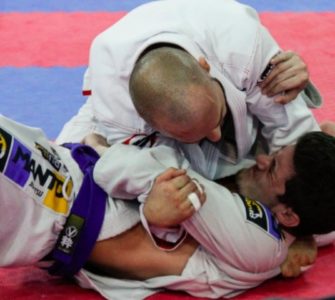Brazilian Jiu Jitsu is a sport of extreme fulfillment and excellence at the same time! It will make you happier than you were before, and it is going to turn you into a better human being in all aspects of life. And you’re well aware of this fact – so you want to start training!
However, here’s the thing. You have some sort of a physical disability, that’s making you wonder whether or not you’ll be able to train… And how to go about training.
We assure you, you can train. Just make sure to follow through the following steps, which will increase your confidence levels, as well as make BJJ a safe and productive environment for you.
IT DEPENDS ON THE DISABILITY – BUT YOU MOST CERTAINLY CAN TRAIN BJJ!
One disability may be less favorable in BJJ than another one. For example, having a loss of hearing isn’t as difficult on the mats as being a person suffering from cerebral palsy.
However, no matter what your disability may be, you most certainly can train Jiu Jitsu!
Depending on your condition, you’ll have to approach training differently, and with varying degrees of safety measures. If you’re suffering from an above-than-mild case of cerebral palsy, you’ll have to make sure that your training partners are going very easy in terms of pressure, for example. On the other hand, if you’re suffering from a loss of hearing, then you’re going to pay more attention to bodily cues; as well as be extra careful with their tapping.
Long story short: yes, you will be able to train. You just need to be smart about your approach… Which you can determine with the right instructor, in the right academy!
FIND THE RIGHT ACADEMY
This step is vital. You’ve got to call a couple of different academies and talk with the instructors there. Explain to them, in detail, what your limitations are; and what you need to stay safe about. If possible, have a live meeting with them; where they could assess you in person first.
During this step, it’s vital that you find an academy that suits you best. Not every academy’s, nor instructor’s approach, will fit you.
Find the one that you’re comfortable in, that’s open about making adjustments to you and your Jiu Jitsu. There are loads of academies like this, you just have to find one yourself!
GET A PRIVATE TRAINING SESSION OR TWO
Next up – private training session! If you’re suffering from a physical disability of any kind, it may be wise to schedule several privates before your first „real“ training.
The reason behind this is simple. During these sessions, your instructor will get more of a feel so as to how to adjust techniques, setups, and the rolling part of training to you. Additionally, you’ll be able to ask him questions, and be gone with any sort of doubts you’re fostering inside your head.
Almost every instructor will be open to this. Your only duty is to ask them, and then continue asking while you train… As well as enjoy your first Jiu Jitsu steps!
BE UPFRONT WITH YOUR TRAINING PARTNERS
Lastly, when you finally enter the training podium, don’t hesitate to be upfront and honest with your training partners. Make them know about your disability, and what they need to watch out for.
Additionally, it’s a good idea to roll with higher belts only, at least in the beginning. White belts are often spazzy, and so you may be risking injury while rolling with them.
Bottom line is that you’re going to train! Go for it… You’ll love it.

















